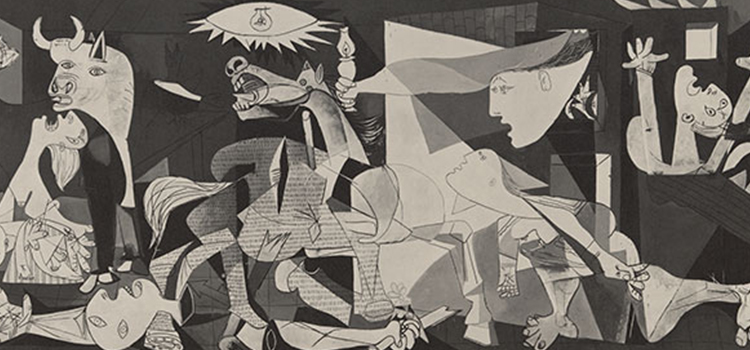
Original Stretcher for Picasso’s Guernica Rediscovered in EAM Storage
A buried treasure from EAM's past was hidden among the paintings and sculptures in the Museum's storage facility: 11 disassembled parts of the original stretcher from a Pablo Picasso masterpiece. The group of stretcher bars was unearthed by museum registrars earlier this year during normal organisation, and while stretchers are occasionally replaced to ensure that a canvas is adequately supported, the discovery did not strike them as remarkable. The vast size and design of the pieces of one stretcher, on the other hand, were quite remarkable. The stretcher was brought to the attention of longtime EAM painting conservator Anny Aviram with almost little identifying information, save for an old, shredded sticker that bore Picasso's name.
The famous artwork is widely regarded as one of the greatest pieces of protest art of the twentieth century. Guernica, which is 11.5 feet tall by 25.5 feet long, was created for the Spanish Republic's pavilion at the 1937 Paris International Exposition of Art and Technology in Modern Life, or World's Fair, for short (349.3 x 776.6 cm). Although Picasso had resided in France since 1904, he was well aware of the civil war raging in his native Spain between the Republic and General Francisco Franco's Nationalists when he was commissioned to paint a mural in January 1937. Picasso struggled to come up with a theme for the work at first; early sketches show him exploring apolitical aspects of an artist's workspace. Then, on April 27, 1937, on April 27, 1937, on April 27, 1937, on April 27,
The attack on Guernica took place just weeks before the Exposition's May 25 opening, and Picasso would not finish the mural until June. The custom-made stretcher, on the other hand, was most likely constructed much sooner, just after he received the contract. It was critical to have a strong, sturdy stretcher to sustain such a massive canvas. Each piece was hand-carved from thick, heavy wood to create interlocking connections where five vertical and two horizontal crossbars intersected, with a peg-and-hole mechanism connecting crossbars to the outer supports. Most crucially, each 25.5-foot-long horizontal support was created using a diagonal joint, which is an uncommon design for a stretcher.
This diagonal joint was one of a few hints indicating Aviram's suspicion that the 11 parts discovered in storage originally supported Guernica was correct. The aforementioned sticker, which turned out to be a paper label intended to identify incoming loans to an exhibition, was another key hint. "San Francisco Museum of Art" (now SFEAM) and "Picasso" are still discernible on the label. The term "mural" is filled in for the title (this was widely used to refer to the piece before Guernica was given its formal title), so the stretcher's origins are clear.
The disassembled stretcher was taken to the Museum from storage, where frame shop foreman Peter Perez attempted to reassemble the pieces. Perez, on the other hand, came to the conclusion that the measurements didn't match; the stretcher was far too little to be Guernica's. Aviram sought advice from a fellow conservator on a visit to the Reina Sofia, the Madrid museum where Guernica is presently on display, when he was stumped. When Aviram arrived to New York, she had the 11 hefty stretcher bars taken to EAM's conservation studio for a second examination.

Leave a Reply